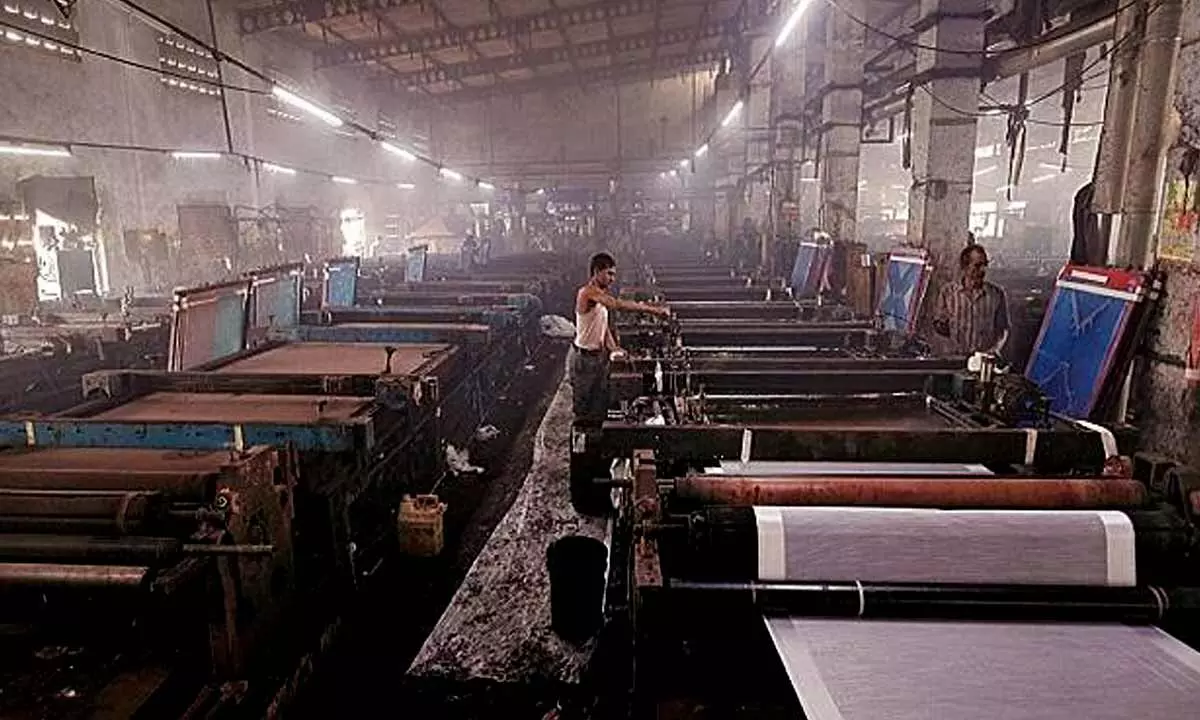Govt handholding key to make Bihar a textile hub
Bihar govt has to work more aggressively to attract investors and make the new textile policy a success
image for illustrative purpose

The large population of the State can be target for the factories and having manufacturing within the State can create an emotional connect with local consumers, it is likely to provide quality and fashion product at low price. The State should also explore to develop its traditional strength of Bhagalpur silk which will benefits its grass route weavers
Across India there are many States having their textile policies and a new name in the list is of Bihar, the State has a large pool of skilled tailors who often work in the factories of Gujarat, Tamil Nadu, Karnataka and Delhi-NCR, etc.
It took almost a year for Bihar to come out with its policy after the initial announcement that it is working on the policy. The policy has nearly all the lucrative subsidies which other States are already offering from years and they were also able to get good investment, few projects are also running successfully after some initial challenges.
The State has given time of one year to the industry to apply under this policy. But to attract investors and make policy successful, Bihar have to work more aggressively compared to other States. Bihar can involve international buyers as well as their Indian suppliers to attract investment in textile and garment industry as these buyers are the driving forces. If buyers support and assure its Indian suppliers regarding continuous business, these suppliers will not have any major issue to have factories in Bihar.
Why would any international buyer will have any interest in Bihar, reason is simple- less cost. There should be no doubt that along with policies, Bihar has advantage of overall low cost, and imagine a situation that a factory is close to nearby area of workers' village. Secondly, how happy and motivated will be that workforce those used to work thousands miles away from home, but if Bihar have few factories, these tailors will be able to work locally. The buyers' and
suppliers both have priority to get low cost product and happy workforce. Though to push the large brand and big textile companies will create buzz, but it can start with medium level companies also.
Jharkhand is one such example as it followed the same way. The State now has some good factories and like Bihar, Jharkhand does not have any raw material production base and its only major strength of is also availability of workforce. Jharkhand was able to attract investment from a global garment manufacturing group. But, Bihar has to be consistent in terms of support, even if government change, there should be no major change in policy or its proper execution.
Secondly, Bihar has to be aggressive to tap the opportunities, and perfect example of the same is Telangana. It has also successfully attracted foreign player to set up a factory and most recently it showed unprecedented aggressiveness to attract a major player from Kerala.
There is another example of its neighbouring State Uttar Pradesh as the UP is supporting its local firms with flatted factory scheme, easy excess to the industry be it higher official or the top leadership of the State. The Uttar Pradesh has worked a lot on its basic infrastructure. All this not only attracts industry but also make operations easy.
There is one more reason that Bihar government should act swiftly. India's textile industry is in full swing and is in investment mode so to approach the industry at this juncture is a good idea.
Few of the factories have shown interest to set up unit in Bihar, but it is not easy at all as the State doesn't have an organized industry. Any beginning is major challenge but it doesn't mean that the State can't have a good industry.
Bihar also has another few things in its favour, like it has National Institute of Fashion Technology which can be instrumental to support the industry in many forms. It will be also added advantage for this international level institute.
The large population of the State can be target for the factories and having manufacturing within the State can create an emotional connect with local consumers, it is likely to provide quality and fashion product at low price. The State should also explore to develop its traditional strength of Bhagalpur silk which will benefits its grass route weavers.
So, we should hope that the State will have some good progress in near future and this will be only possible with hand holding of the industry by the government. Once factories start there, it may have cascading effect too.
(The author owns a garment manufacturing setup in a rural area, which employs mostly women workers)

